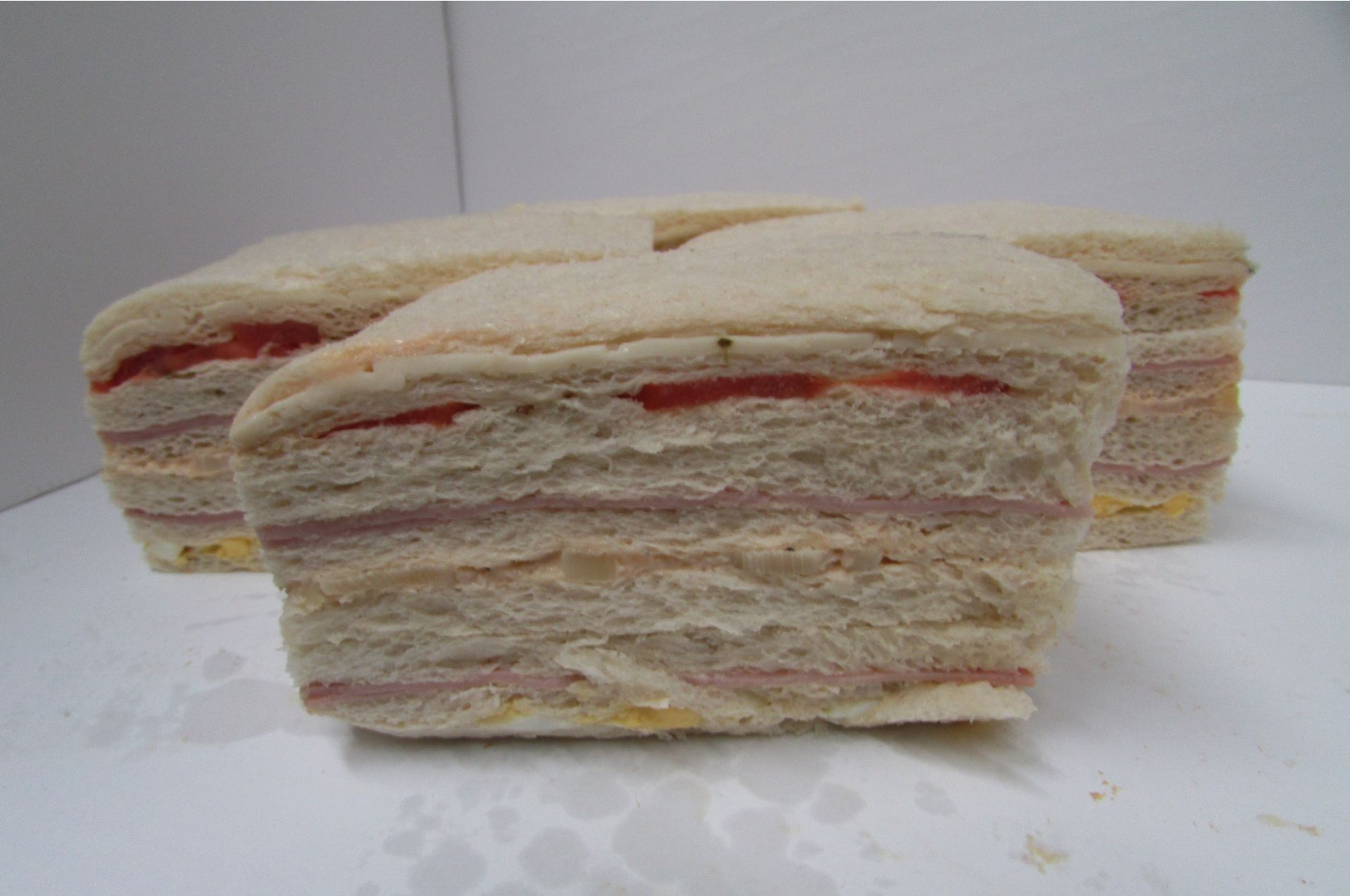Sandwiches de Miga are popular Finger Food items, in Argentina, Chile, and Uruguay, where they are consumed mainly at parties.[1]
The Sandwiches de Miga are similar to the English cucumber sandwich, which is a typical tea-time food and resembles the Italian tramezzino.
The Academia Argentina de Gastronomia suggests that the sandwiches may have been introduced into Argentina by immigrants from Northern Italy.[2]
In contrast to that story, the Buenos Aires newspaper Clarín suggests that the sandwich was actually invented by local bakers at the Confitería Ideal who had made a sandwich with a recreated English-style bread to satisfy a group of home-sick British engineers who used to frequent their establishment during the early part of the twentieth century.[3][4]
The sandwiches are single, double or triples layered and are made from a thin white bread without crust, i.e. the part of the bread called “Miga” (i.e., crumb).
They are filled with thinly sliced meat, especially ham, eggs, cheese, tomatoes, green peppers, tuna, lettuce, and sometimes other vegetables, such as asparagus.[5][6][7]
Butter is another important ingredient. They can be toasted or untoasted.
Instead of making them from scratch, Argentines usually buy them at a local bakery.
Source: Wikipedia
View Our Sandwiches de Miga Menu
